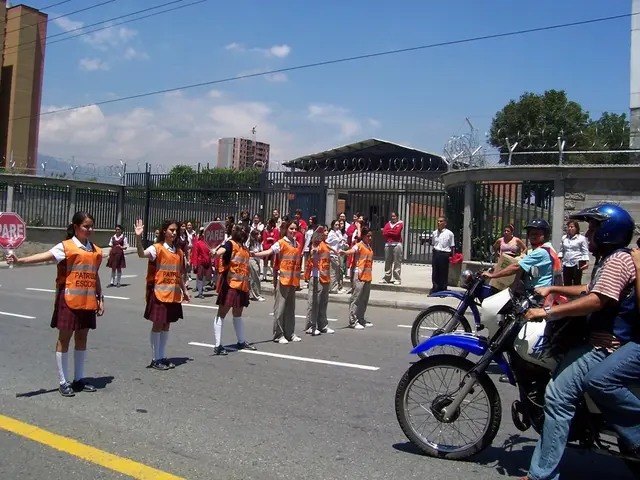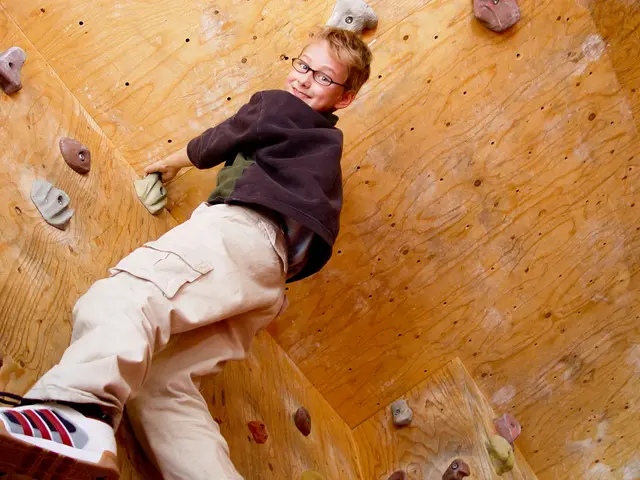Mathematics Approach in Singapore: Insight, Functionality, Advantages, and Disadvantages
Singapore Maths: A Hands-On Approach to Mastering Math
Singapore Maths, a one-of-a-kind mathematical education method, has skyrocketed to international fame for its fascinating approach to teaching. In Singapore, it's simply known as Maths, but for the rest of the world, it's far from ordinary. Born in the heart of Singapore's national curriculum, this gem of a teaching method has been beaming brightly since 1982. Maybe that's why students from Singapore are streaks ahead in academic success, particularly in Maths, Science, and tech fields[1].
What's the Deal with Singapore Maths?
First introduced by the Singapore Ministry of Education, Singapore Maths shied away from the global limelight until 1998, when a pair of parents, Jeffrey and Dawn Thomas, realized their daughters' American Maths education was seriously lacking. That's when the cat was let out of the bag, and other countries started snatching up this unique Maths teaching style.
Critics have grumbled that the Singapore Maths method is too tough on students, but that's all talk and no trousers. In reality, it flips education on its head, changing the way students approach learning and think in day-to-day life[2]. But let's not forget; every diamond has its cuts and angles.
The Nitty-Gritty of Singapore Maths
Singapore Maths works its magic through a three-step learning process:
- The Tactile Phase: Students physically interact with objects to grasp the concepts. For instance, using real oranges to learn counting, dividing, and multiplying[2].
- The Visual Phase: Understanding problems by creating drawings and doodles[2].
- The Abstract Phase: The learning journey wraps up with abstract concepts and using symbols like +, -, *, and / to solve problems[2].
Textbooks and workbooks work seamlessly to support the learning journey. The lessons are as concise as a haiku, packed with engaging graphics that will pique any young mind[2].
Victory for Confidence
Gone are the days of rote memorization. Singapore Maths emphasizes conceptual understanding, leaving students more confident in their learning[2].
Students in Singapore are the math whizzes of the world. It's clear when you compare them statistically with other countries[1]. Nowadays, Singapore Maths has become the darling of educational institutions across the U.S. California schools are embracing it, peddling it even from kindergarten level[2].
Why Is Singapore Maths the Life of the Party?
The allure of Singapore Maths lies in its ability to turn simpletons into thinkers. Every concept is dissected from multiple angles with plenty of variations, making it effortless for students to nail their understanding[3].
Conventional textbooks are missing a trick by neglecting the visual aspect. For students who find it hard to grok abstract concepts, this is where Singapore Maths shines. By teaching the same lesson from various angles, students learn how to think abstractly, not just cram facts and figures[3].
For those migrating from the traditional U.S. math textbooks to Singapore Maths, it's a new and exciting challenge that they're not quite confined to the curriculum[3].
The Pros and Cons of Singapore Maths
Singapore Maths has its high points and low points, just like any other teaching method. Here are the pros and cons to consider:
Pros
- Encouraging Inquisitiveness: Students learn to question and ponder the lessons they learn, developing crucial thinking skills that are key for future academic success in STEM fields[1].
- Compact and Consistent Learning: The lessons are brief yet powerful, focusing on understanding concepts instead of rote memorization[2].
- World-Class Results: Singaporean students are renowned worldwide for their strong math skills[1].
Cons
- Steep Learning Curve: This method requires time and effort to learn, making it challenging for some students and requiring additional support for those who struggle[1].
- Needed Faculty Training: Effective teaching of Singapore Maths demands highly skilled teachers who understand the CPA (Concrete, Pictorial, Abstract) method[1].
- Less Flexibility: The method might not be as accommodating to diverse learning styles compared to more flexible methods like Common Core[1].
- Costly Resources: The required supplies for teaching Singapore Maths can be pricey, and arranging them on the fly isn't always a piece of cake[2].
- No Revision: The Singapore Maths method doesn't revisit previous lessons once new concepts have been introduced, making it harder for students who switch schools to catch up[2].
Frequently Asked Questions
1. Is Singapore Maths suitable for all students?
For the most part, Singapore Maths delivers fantastic results for students. However, some students might need additional help to comprehend the concepts. They may also need extra time to grasp the lessons[1].
2. Do teachers need special training to teach Singapore Maths?
Yes, teachers need training to effectively deliver Singapore Maths. They must learn how to utilize the CPA (Concrete, Pictorial, Abstract) method to ensure their students are guided through the steps, not just spoon-fed the answers[4].
References
- Rochester Classical Academy - Unveiling the Benefits of Singapore Math: Empowering Students for Mathematical Success
- Herts for Learning - The 'CPA' approach
- Mathmax - Singapore Math vs Traditional Math: Which One is Better for Your Child?
- Matific - What is Singapore Math and How Effective Is It?
- A lifestyle blogger incorporates Singapore Maths practices into her home-and-garden routines as part of her educational-and-self-development journey, using the tactile and visual phases of the teaching method to engage her kids and foster a love for learning.
- As a parent, I am encouraged to supplement my children's learning with Singapore Maths resources - workbooks, textbooks, and online materials - to boost their confidence and success in math, enhancing the overall parenting experience by fostering a stronger bond between us.








